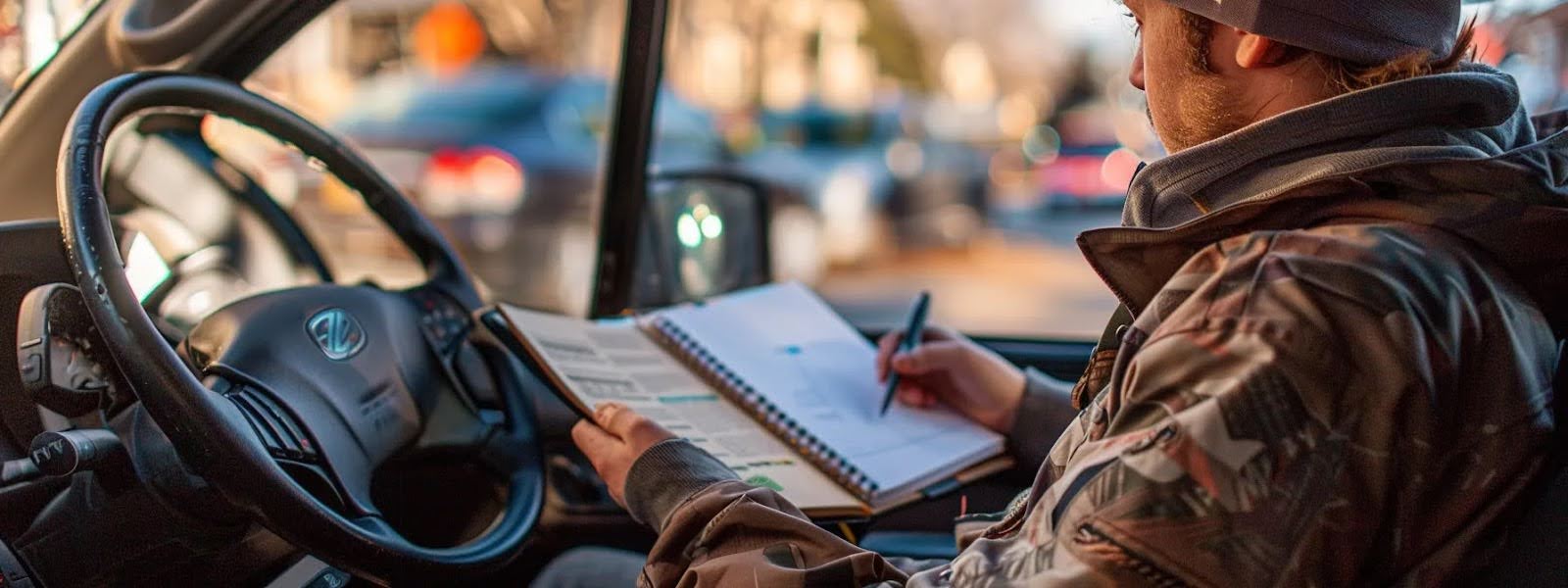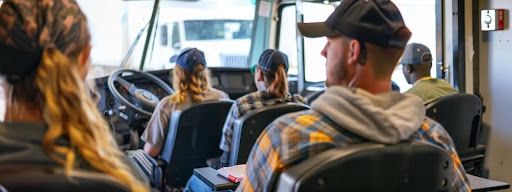Apr 18
Fastest Way to Get a CDL License
Fastest Way to Get a CDL License
The Commercial Driver’s License (CDL) opens the door to a strong, stable career in the trucking and logistics industry. However, many people hesitate because they think getting a CDL will take months. The truth is: with the right preparation and strategy, you can get your CDL quickly and start earning faster.
This guide will walk you through the fastest way to get a CDL license, step-by-step.
Understanding CDL License Classes

Before you begin training or studying, it’s important to understand the different classes of CDL licenses:
- Class A CDL: Required to operate any combination of vehicles with a gross combination weight rating (GCWR) of 26,001 pounds or more, provided the vehicle being towed weighs more than 10,000 pounds. This license offers the most driving flexibility and job opportunities.
- Class B CDL: Required for operating a single vehicle with a GCWR of 26,001 pounds or more, or towing a vehicle not exceeding 10,000 pounds. Typically used for driving buses, dump trucks, and delivery trucks.
- Class C CDL: Needed to operate vehicles designed to transport 16 or more passengers or hazardous materials.
Choosing the right class at the start helps you avoid delays from needing additional training later.
Meeting the Basic Requirements
Before applying for a CDL, ensure you meet these baseline requirements:
- Be at least 18 years old for intrastate driving (within one state), and 21 years old for interstate driving.
- Hold a valid, non-suspended driver’s license.
- Provide proof of U.S. citizenship or lawful residency.
- Obtain a Medical Examiner’s Certificate after passing a Department of Transportation (DOT) physical exam.
Having these documents ready before you begin training will streamline the process and prevent unnecessary waiting periods.
Earning Your Commercial Learner’s Permit (CLP)

The first major step is obtaining your Commercial Learner’s Permit (CLP). This allows you to legally practice driving a commercial vehicle under the supervision of a licensed CDL holder.
To obtain a CLP:
- Study the state CDL manual thoroughly, focusing on sections relevant to your chosen license class.
- Pass the required written knowledge tests, which typically include:
- General Knowledge Test
- Air Brakes Test (if applicable)
- Combination Vehicles Test (for Class A)
Once you pass these exams, you will be issued a CLP. Federal law requires you to hold the permit for at least 14 days before taking the skills test.
Using high-quality online study courses can help you pass these exams on the first attempt, saving valuable time.
Selecting an Accelerated CDL Training Program
Choosing the right CDL school is crucial if your goal is to get licensed quickly.
Look for training programs that:
- Are listed in the FMCSA’s Training Provider Registry (a legal requirement since February 2022).
- Offer fast-track or intensive programs that complete in 3–5 weeks.
- Provide on-site testing for the skills test, reducing scheduling delays with state DMVs.
- Maintain modern vehicles and professional instructors to ensure effective hands-on learning.
Training schools that allow flexible schedules, including weekend classes or night courses, can help if you need to balance work and training, but full-time enrollment is usually the fastest path.
Completing CDL Training Efficiently

CDL training typically covers three critical areas:
- Vehicle Inspection: Pre-trip inspection routines.
- Basic Driving Skills: Maneuvering, backing up, and parking a commercial vehicle.
- Road Driving: Real-world scenarios on highways and city streets.
Efficient training programs prioritize hands-on practice over classroom theory. A solid curriculum will prepare you for every component of the CDL skills test. Students who actively engage with instructors, seek additional practice when needed, and commit fully to the training schedule often complete their training ahead of schedule.
Preparing for and Passing the CDL Skills Test
After completing training and holding your CLP for the mandatory 14-day period, you will be eligible to take the CDL skills test. The test has three parts:
- Pre-Trip Inspection: Demonstrating your ability to inspect your vehicle before operating it.
- Basic Vehicle Control: Performing maneuvers such as straight-line backing, offset backing, and parallel parking.
- On-Road Driving: Operating the vehicle safely in traffic, following road signs, signaling properly, and executing turns and lane changes correctly.
Preparing thoroughly for all three sections increases your chances of passing on the first attempt. Failure often results in delays of several weeks, as retest appointments can be limited.
If possible, schedule your skills test as early as permitted. Some schools coordinate testing immediately after course completion, allowing you to skip long DMV waiting lists.
Exploring Online CDL Training Options

Online CDL courses have become a popular tool for speeding up the licensing process. Many theory portions of CDL training can now be completed online through FMCSA-approved providers.
By completing the theory component online, you:
- Reduce time spent sitting in classrooms.
- Learn at your own pace, often finishing faster than scheduled.
- Focus more time on practical, behind-the-wheel training.
At OnlineTrafficSafety.com, you can find comprehensive online CDL courses designed to help you prepare faster while meeting all federal training standards.
Planning for Endorsements During CDL Training
Adding endorsements to your CDL can expand your job opportunities. It’s smart to prepare for endorsements during your initial training instead of going back later.
Common endorsements include:
- Hazardous Materials (Hazmat): Required for transporting hazardous materials.
- Tanker: For hauling liquid loads in tank vehicles.
- Passenger (P): Required for carrying passengers.
- School Bus (S): Specialized training and certification to drive school buses.
Preparing for these endorsements alongside your core training reduces extra testing time and opens more high-paying positions immediately after licensing.
Starting Your CDL Career Quickly
Once you have your CDL in hand, many employers are ready to hire new drivers immediately. Some companies even offer sign-on bonuses for newly licensed drivers.
Opportunities include:
- Over-the-road (OTR) trucking
- Local delivery routes
- Regional driving
- Specialized freight hauling
- Passenger transportation (with endorsements)
Companies often prioritize drivers who obtained their license through FMCSA-compliant programs and have a clean driving record. Getting a CDL quickly and professionally shows employers that you are motivated, serious, and ready to work.
Conclusion
Getting your CDL license quickly is entirely achievable if you approach the process with focus and smart planning. Start by selecting the right license class, prepare for your CLP efficiently, enroll in a fast-track training program, and leverage online learning to save time.
By using streamlined, professional resources like those offered by OnlineTrafficSafety.com you can move from student to licensed driver in as little as 5–7 weeks.
The trucking industry needs qualified drivers now more than ever. Start your journey today and get on the fast track to a stable, rewarding career.
Who we are
Online Traffic Safety is at the forefront of delivering up-to-date and effective traffic safety training. We believe that informed drivers are safe drivers, and our goal is to equip every individual with the knowledge and skills needed to navigate the roads confidently and safely.
Featured links
Get in touch
-
info@onlinetrafficsafety.com
Connect with us
-
Facebook
-
Twitter
-
Youtube
-
Instagram
-
Linkedin
-
TikTok
Online Traffic Safety © 2024
